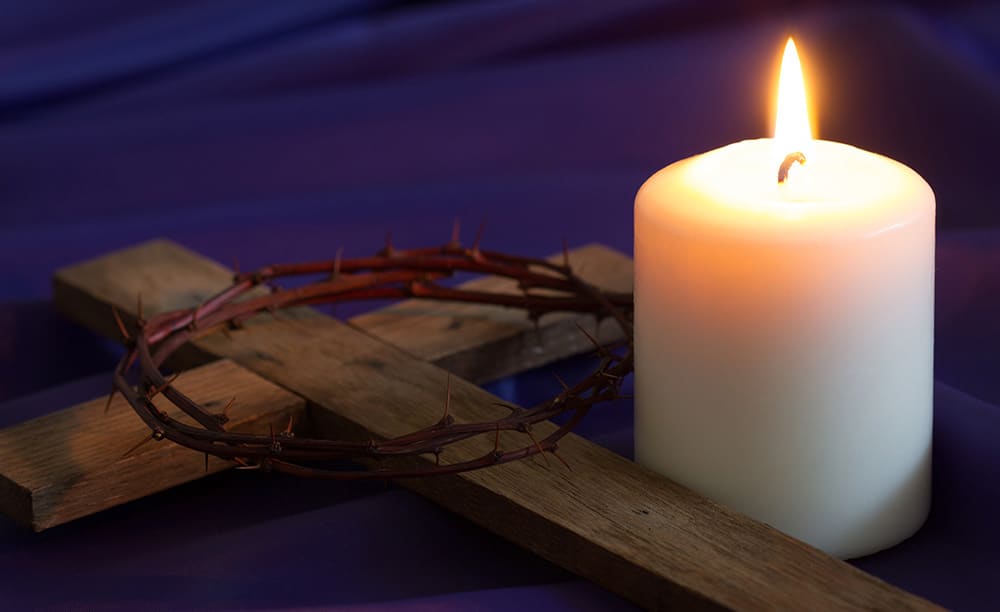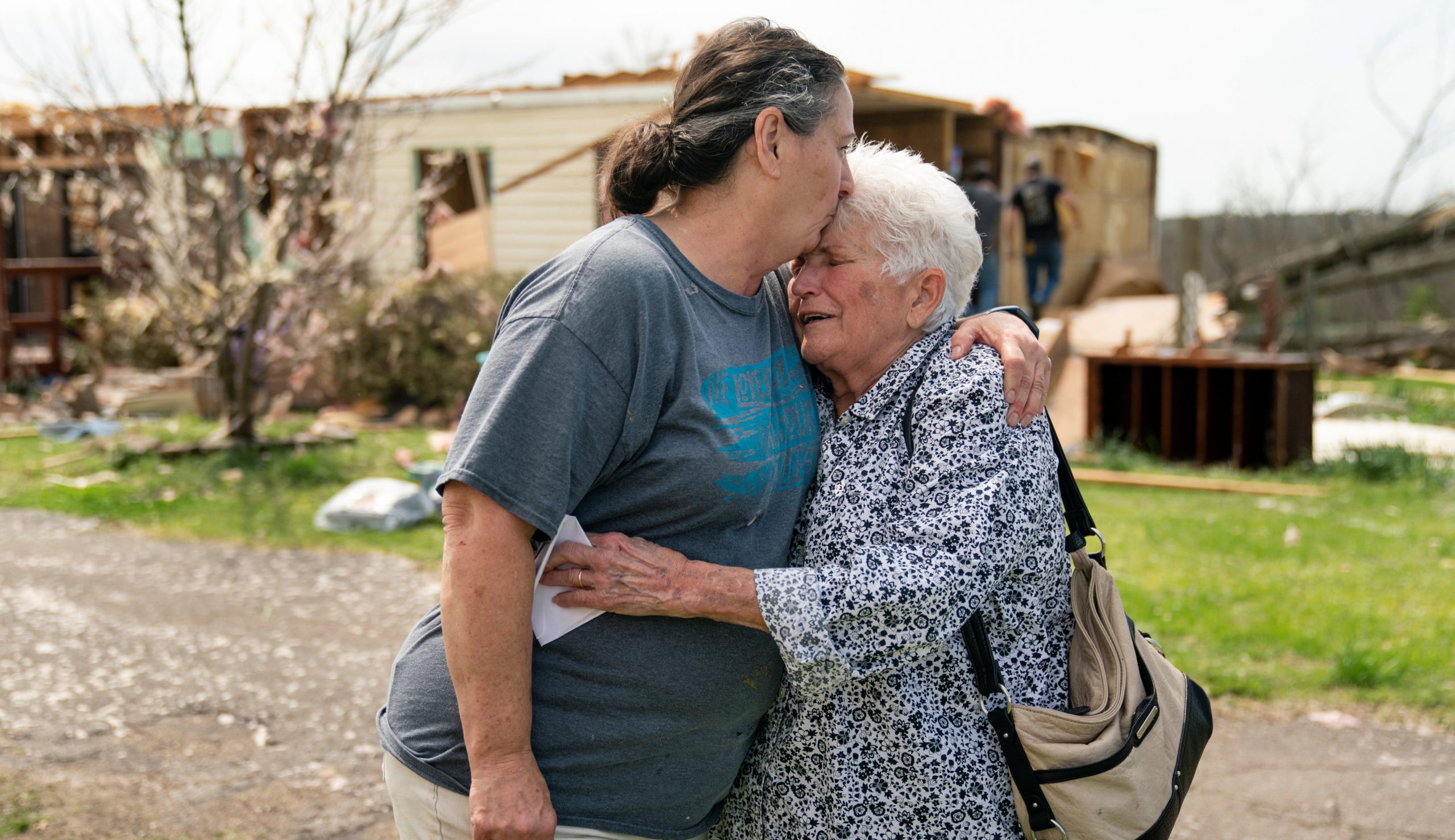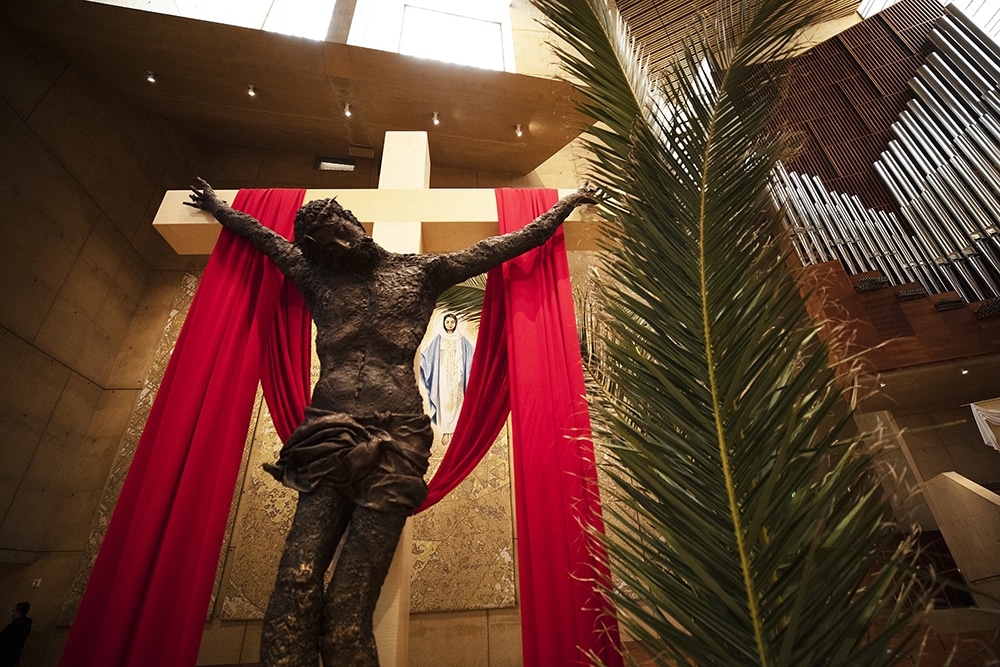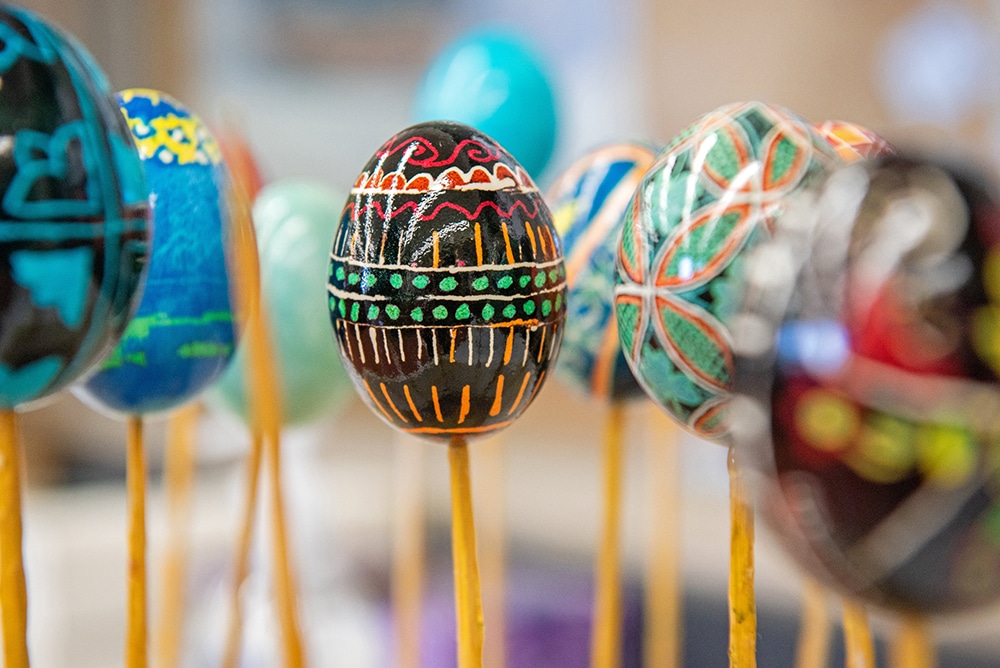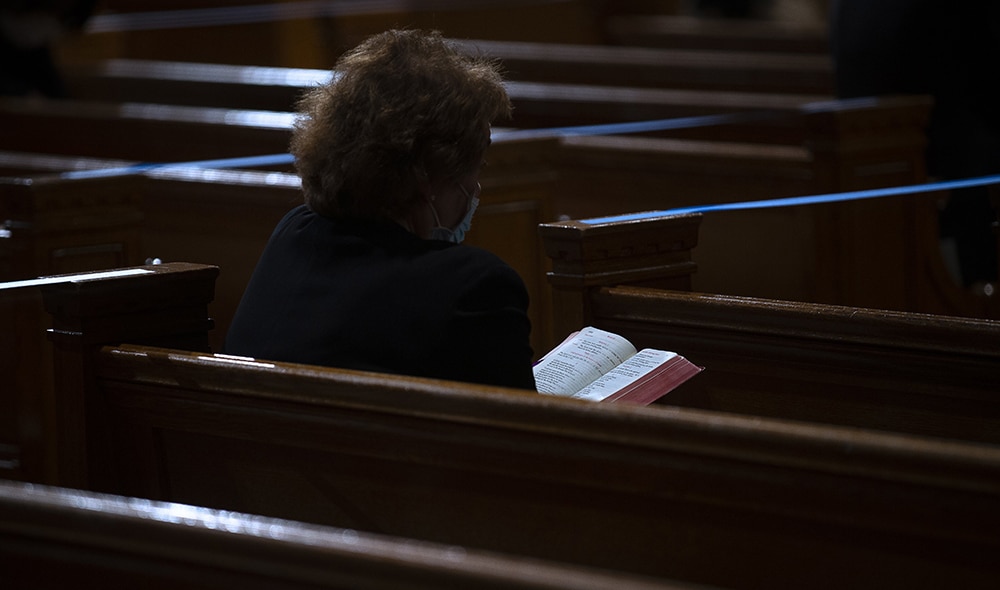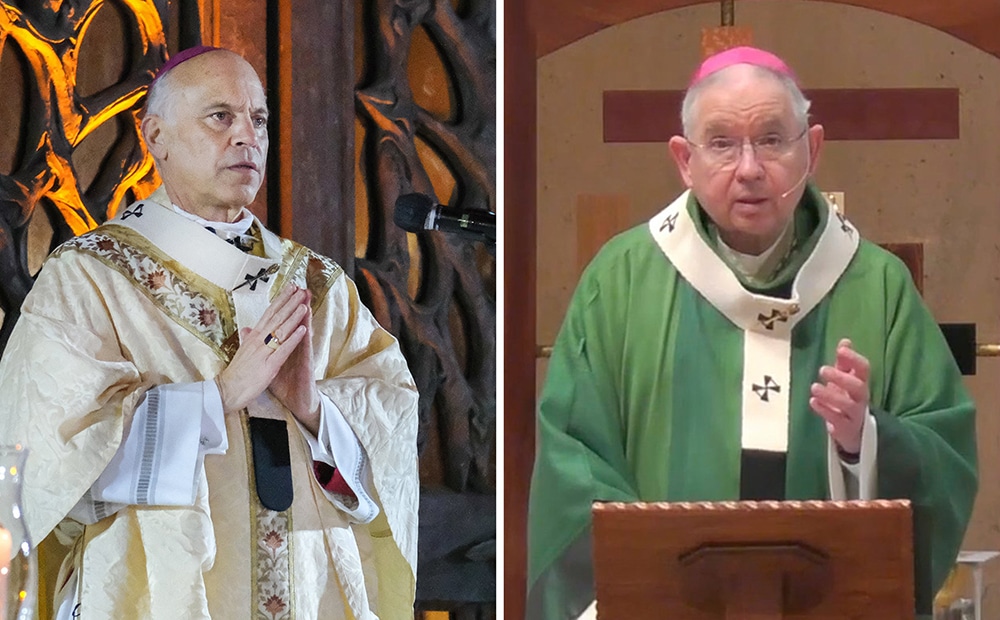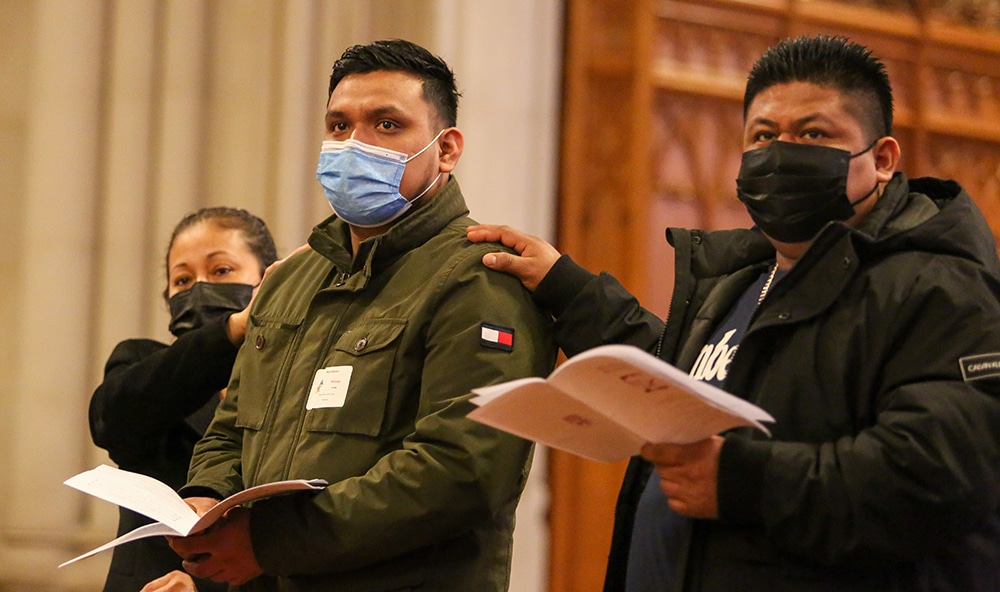Throughout Holy Week, the Church’s liturgies walk the faithful through the most dramatic events of salvation history. They are longer, typically, and not necessarily what the lay faithful are used to experiencing on most Sundays and holy days of obligation throughout the Church’s liturgical year.
“But it’s worth it to put in the effort,” said Father Roger Landry, a priest of the Diocese of Fall River, Massachusetts, who serves as a papal-appointed missionary of mercy and is the chaplain of the Leonine Forum in New York City.
Beginning on Palm Sunday and culminating at the Easter Vigil, Holy Week brings thousands of years of salvation history to a dramatic and climactic moment where the Second Person of the Most Holy Trinity suffers and dies on a Roman cross, only to be resurrected on the third day.
The liturgies of Holy Week take the faithful through the events of that pivotal week in human history from more than 2,000 years ago, immersing them into the Last Supper, the institution of the Eucharist and priesthood, the Lord’s agony in Gethsemane, Judas’ betrayal, the Passion, the Crucifixion, Jesus’ burial and the empty tomb — the turning point that makes our salvation possible.
Below, Father Landry guides readers through Holy Week, exploring the history and tradition of the liturgies and providing a better understanding of what makes this the most sacred time of the year.
Palm Sunday
Observed on the sixth Sunday in Lent, Palm Sunday marks the official beginning of Holy Week. The liturgy commemorates Jesus’ entry into Jerusalem, where residents hailed him as their king and laid down palm branches as he entered the city on a donkey.
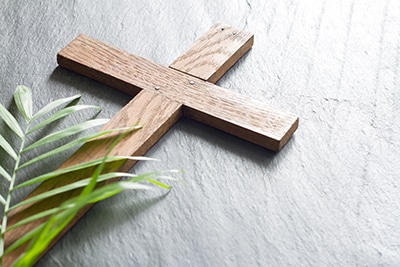
“We ponder with Jesus’ entry into Jerusalem whether we are truly open to him as he desires and deserves of us,” said Father Landry, who added that the crowds who chant, “Hosannah!” at Jesus’ arrival should prompt a question in all of us.
“How joyful are we when Jesus comes into our life? Do we lay out the red carpet for him, or has it become a little routinized? Holy Week is a time, especially Palm Sunday, where first we ponder our receptivity to the Lord and our joy at his coming.”
On Palm Sunday, the Passion is read from either the Gospel of Matthew, Mark or Luke, depending on the year’s lectionary cycle. This year, Mark’s account of the Passion will be read.
“When we ponder the proclamation of the Passion on Palm Sunday, it’s supposed to set the tone for the entire week,” Father Landry said.
Chrism Mass
Traditionally held on Holy Thursday, the Chrism Mass today is normally celebrated at the diocesan cathedral sometime between Palm Sunday and the Wednesday of Holy Week in most dioceses. In this liturgy, the local bishop blesses the three sacred oils — the oil of the sick, the oil of the catechumens and the sacred chrism. The blessed holy oils are then distributed to churches throughout the diocese.
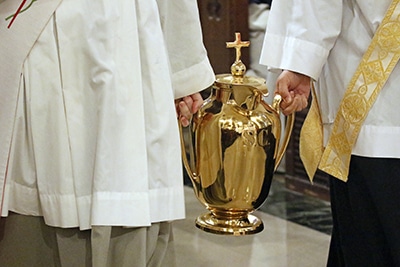
The sacred chrism will be used to confirm the elect at the Easter Vigil and also for priestly ordinations and certain sacramental blessings and consecrations. The oil of the catechumens is used throughout the year for baptisms, while the oil of the sick will be used during the Sacrament of the Anointing of the Sick.
“The name of the Chrism Mass comes ultimately from blessing the holy chrism, which is used in three sacraments, but really makes possible the sacrament of holy orders,” said Father Landry, who added that the liturgy also has a special focus on the renewal of the clergy’s priestly promises.
“This in the heart of Holy Week, foreseen on Holy Thursday, is supposed to be a chance for every priest to recommit himself to his holy vocation and for the entire people of God to pray for their priests to be faithful to their promises so that they might be instruments of salvation in every faithful person’s life,” Father Landry said.
At the Chrism Mass, the presbyterate of a diocese assembles together. Other than ordinations, it’s normally the only time in the year where the priests of the diocese will see each other as an entire body, especially in a liturgical setting.
“It’s a time where the priests come together in which their gratitude for each other’s priesthood and their own grows, their prayer for themselves and for others, and for a hearty prayer for the People of God who show their appreciation for faithful priests in carrying out God’s plans in their lives,” Father Landry said
Monday through Wednesday of Holy Week
These three days set the stage for the events of Holy Thursday, Good Friday and Holy Saturday. The Mass readings encompass the historical events that precede the Last Supper, but they also take the faithful through various interior reflections in preparation for the Sacred Triduum.
On Monday, the Gospel reading has the contrast between Mary of Bethany and Judas with regard to the value of Jesus.
“Mary of Bethany expends a whole year’s worth of salary just to anoint Jesus’ feet,” Father Landry said. “Judas complains because he thought the money could go toward the poor. But he then goes to sell Jesus for one-ninth of the spikenard that was poured over Jesus’ feet.”
In Tuesday’s Gospel reading, Judas’ betrayal and death are foreshadowed.
“When Judas left the Upper Room, nobody would have guessed that he would have been dead by suicide even before Jesus died to execution,” Father Landry said.
Tuesday’s Gospel also shows the stark difference between how Judas and Peter will later respond to the Lord’s mercy. A despondent Judas will take his own life, while Peter, who denied Jesus, will repent and ask for forgiveness from the Risen Christ.
“Judas, after he had sinned, had obviously never gotten the first thing about Jesus and his mission of mercy,” Father Landry said. “So he wouldn’t go back to Jesus and say, ‘I’m so sorry.’ Whereas Peter, who had said that he would die before denying the Lord, then went out and three times denied the Lord, had gotten that Jesus was mercy incarnate. When Jesus looked at him, Peter was touched with bitter remorse, and he was able to ask for repentance for his sins, unlike Judas.
“It’s a huge contrast in how we approach Jesus with our sins,” Father Landry said. “Do we do so like Judas? Or do we do so like Peter?”
On Wednesday, the Gospel’s focus again is on Judas and the actions he took to betray Jesus that led to the Crucifixion.
“He is not the only one in history who has betrayed Jesus, and sometimes we’ll betray Jesus for far less than 30 pieces of silver,” said Father Landry, who added that the message in these Holy Week Gospel readings is not so much a warning not to imitate Judas, but to recognize that he could have sought the Lord’s saving mercy as well.
“If only he would have opened himself up to receive the gift of the Lord’s mercy,” Father Landry said. “For us, that’s another appeal as we get into the heart of Holy Week, to open ourselves up to God and what he wants to do in us in the week we call holy.”
Holy Thursday
The Mass of the Lord’s Supper on Holy Thursday commemorates Jesus’ institution of the Eucharist at the Last Supper and the institution of the priesthood. Holy Thursday is also the beginning of the sacred Triduum.
“This is a night to thank God more than any other night for the gift of the holy Eucharist, for the gift of the priesthood that makes the holy Eucharist possible, and for the way that the Lord did everything he needed to in order to give us all that he had, even to washing our feet as if he were a slave and we were his masters,” Father Landry said.
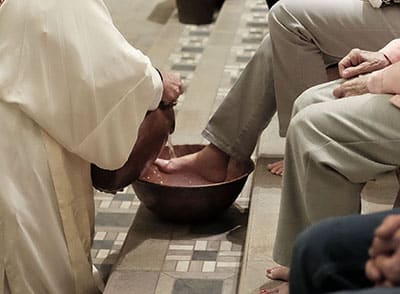
St. John’s Gospel records the foot washing as an instruction for the entire life of the Christian community. “If I, therefore, the master and teacher, have washed your feet, you ought to wash one another’s feet,” Christ says in John 13:14.
A liturgical reenactment of the foot washing is a distinctive rite in the Holy Thursday liturgy. The priest washes and dries the feet of several members of his flock, emphasizing the ministerial role of the priesthood that Jesus instituted and the humble service that Christ modeled for the apostles.
“When I look at Holy Thursday, I hear Jesus’ words from St. Luke: ‘I have eagerly desired to eat this Passover with you before I suffer,'” Father Landry said. “For those of us who love Jesus, we need to meet that eagerness. This is the most incredible invitation any of us would ever receive, and many of us don’t respond to that invitation. The crowds of Holy Thursday night are basically the crowds we should see on a holy day of obligation.”
Normally, the Holy Thursday liturgy concludes with the transfer of the Blessed Sacrament to an altar of repose, separate from the main altar and tabernacle. COVID-related restrictions this year will lead to the procession to the altar of repose being canceled.
The procession echoes the journey that Jesus and the apostles took across the Kidron Valley to the Garden of Gethsemane after sharing the Passover meal. The faithful then keep vigil throughout the evening and night, echoing the Lord’s words to Peter in the Garden: “Could you not keep watch with me for one hour?”
“Keeping vigil with Jesus in prayer strengthens our weak flesh,” Father Landry said. “One of the reasons Jesus appreciates our time with him is because he strengthens us in that time while he is praying so that our flesh might be strong to remain faithful to him in tests, big and small.”
Good Friday
The Good Friday service — the liturgy is not a Mass — usually begins at 3 p.m., which marks the time of Christ’s death. The day’s liturgy commemorates Christ’s crucifixion and death. The Passion as told by St. John is chanted or proclaimed.
Like Holy Thursday, Good Friday is not a holy day of obligation, though the faithful are encouraged to attend.
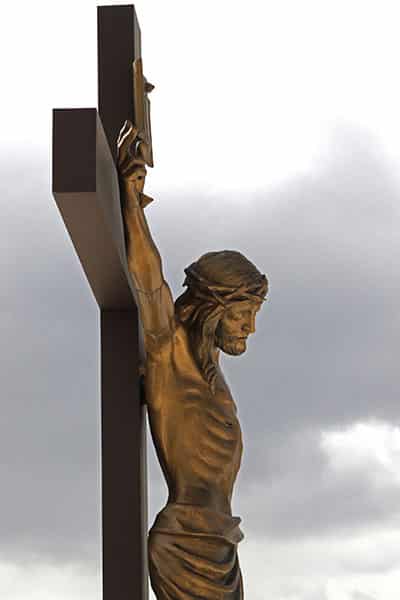
“Almost all of us would want to be present at the bedside of a loved one,” Father Landry said. “We would take time off of work. We would even quit our jobs sometimes if our loved one were dying. We should have a similar love for Jesus. If it requires taking vacation days so that we have one fewer day at the beach in order to be present, for those of us who have any control whatsoever over our schedule, it’s really essential for us in faith to be present with the Lord as he was dying out of love for us. So we enter into that mystery of his crucifixion and his death.”
The liturgy also includes the adoration of the cross, where the faithful recognize the cross not so much as an instrument of torture and pain, but a sign of the radical love that made even that much pain endurable.
“It’s venerating the new tree of life by which Jesus, the fruit of that tree of life, has given us new life that is meant to last forever,” Father Landry said.
While not a Mass, Eucharistic hosts consecrated on Holy Thursday are distributed to the faithful, who also pray for Christian unity and that non-Christians may come to embrace the fullness of Christ’s truth.
Holy Saturday/Easter Vigil
Early Saturday is a solemn day as the faithful reflect on the mystery of Christ’s descent into Sheol to free the dead.
“It’s a real day of silence in which we ponder Jesus in the tomb and what Jesus is doing as his body lay in the tomb,” Father Landry said.
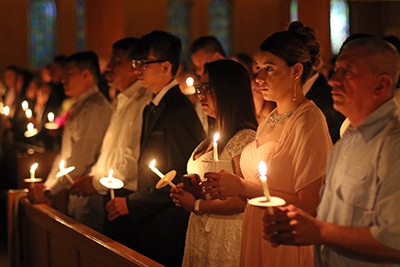
As sundown arrives, the Church celebrates the Resurrection of the Lord Jesus in the Easter Vigil, the high point of the entire liturgical year. The Mass consists of the Service of Light, the Liturgy of the Word, The Liturgy of Baptism with Christian Initiation, confirmation and the Renewal of Baptismal Promises, and the Liturgy of the Eucharist.
“It’s by far the most beautiful Mass of the year,” Father Landry said. “There’s a 17 course meal of the word of God, with seven Old Testament readings, seven psalms, a New Testament reading, another psalm and the Gospel.
“We retrace all of salvation history that got us to the moment that we’re in,” Father Landry said. “It’s an opportunity for us to welcome new brothers and sisters in the Faith. For us to be there to welcome new family members is such a beautiful witness to what the Church is. Likewise, we’re able to receive the risen body of the Lord within us. That’s the newness of life that is proclaimed that we don’t just celebrate a fact, but we enter into a relationship with him who says ‘I am the resurrection and the life.'”
Brian Fraga is a contributing editor for Our Sunday Visitor.

